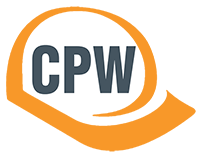We provide quite a bit of prevailing wage consulting and education for public works contractors, and it seems that, while many PW construction companies may be familiar with the need to annualize the portion of the medical premium that the employer provides, there are still quite a few who do not. With that in mind, we thought we’d share some of the basic annualization guidelines we provide to our prevailing wage consulting clients.
Annual Payments: For prevailing wage contractors who make annual payments in advance to cover the coming year’s medical premiums, the total hours worked by the employees performing work in the preceding calendar year (or plan year) will be considered as representative of a normal work year for purposes of annualization. (Important note: Even if the employee is expected to work fewer hours this year than in the past, the previous year’s total hours are still considered to be the normal work year!) The total hours worked should then be divided into the contribution made by the employer to determine the hourly cash equivalent for which the employer is entitled to take credit for each employee.
Ex: The total hours an employee worked in the previous year was 1948. The employer makes an annual contribution of $5,000 for each employee.
$5,000 / 1948 hours = $2.56 per hour credit.
Monthly Payments: For Prevailing wage contractors who pay monthly health insurance premiums there are two ways to determine the hourly cash equivalent.
1. Health Insurance Premiums Paid on a Lump Sum Basis: The total actual hours worked in the previous month (or in the same month in the previous year) may be used to determine or estimate the hourly cash equivalent. The total hours worked should then be divided into the contribution made by the employer to determine the hourly cash equivalent for which the employer is entitled to take credit for each employee.
CONTRIBUTION AMOUNT / HOURS = $$ CREDIT
Ex: The total hours an employee worked in the previous month was 158. The employer’s portion of the medical premium is $287.
$287 / 158 hours = $1.81 per hour credit
2. Health Insurance Premium Annualization Estimate: Many prevailing wage contractors may not want to do a calculation every month to determine the amount of credit they can take for each employee. Instead, they may want to estimate their annualized amount and take the same credit for each employee throughout the year. This is often the most utilized choice and the easiest to administer. In order to determine the annualized amount, a contractor may use the full year equivalent of 2,080 hours (40 hours a week x 52 weeks) in determining the applicable credit.
MONTHLY PREMIUM x 12 / 2,080 = $$ CREDIT
Ex: The employer’s portion of the medical premium is $287 per month.
$287 x 12 / 2,080 = $1.65 per hour credit
IMPORTANT NOTE: When doing a premium annualization estimate, you MUST review the total hours worked for their employees each quarter! If the employee is on-track to work in excess of the 2,080 hours, a refund must be issued to the employee for the overages and no further credit can be taken for him during that representative year.
We know annualization can be confusing for many contractors, and that’s why we offer prevailing wage education, training and consulting services. So please give us a call and we can help you figure out which method is best for you and your company.

